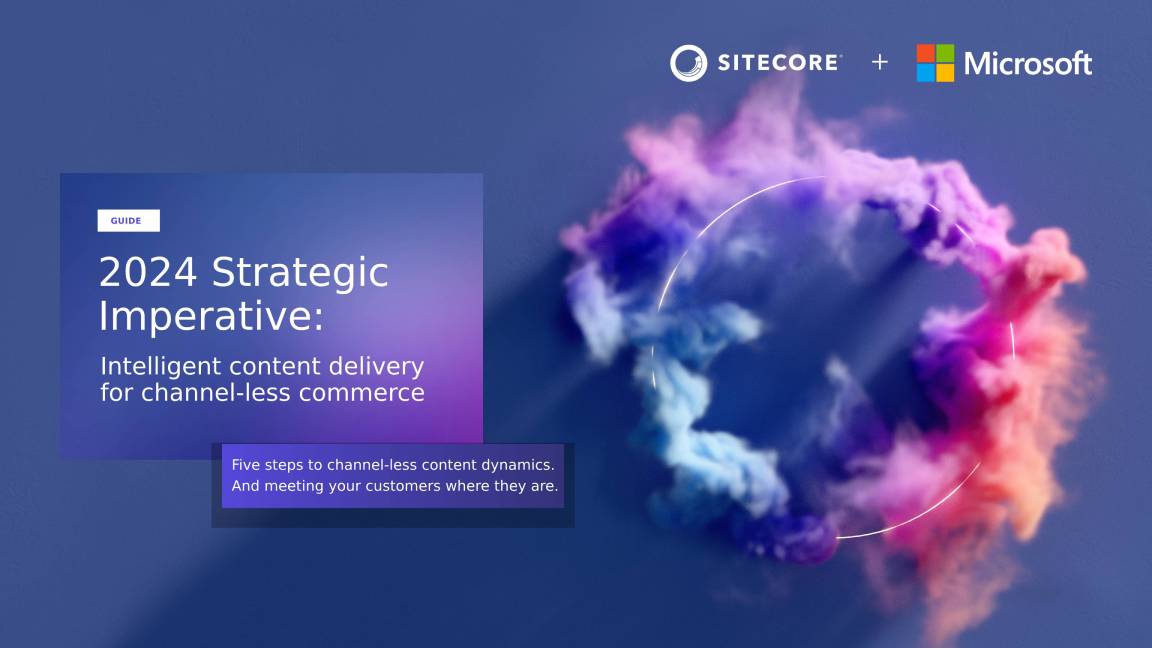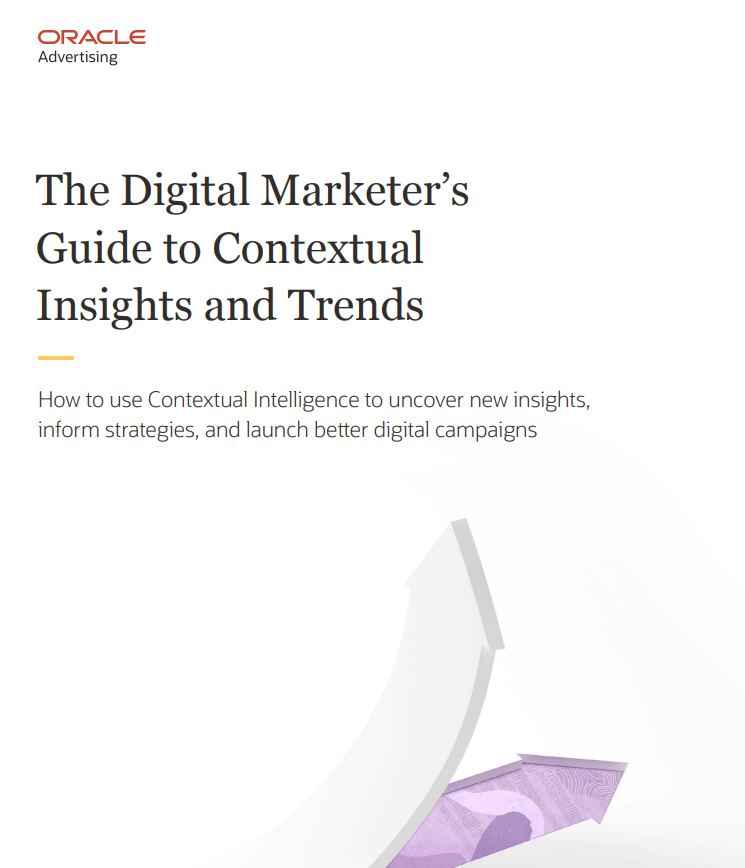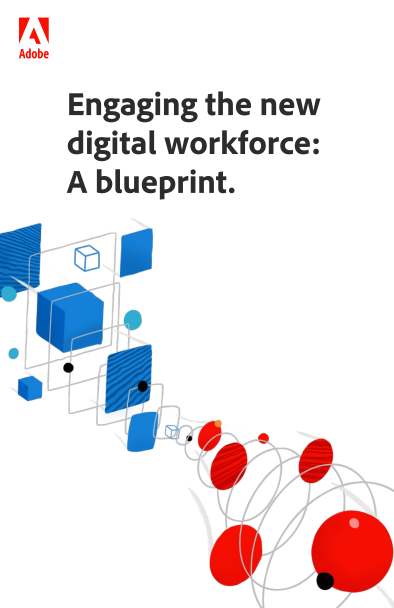Three ways a cloud-native CMS improves your content processes
A cloud-native CMS can be the differentiator between delivering an enhanced customer experience and falling behind competitors

The content management landscape is changing. To support the modern enterprise in its quest to meet evolving customer expectations, technology is shifting away from on-premise and cloud-based infrastructure, both of which are outdated and unable to deliver the modern customer experience, towards cloud-native infrastructure which holds agility and flexibility at its core.
RELATED RESOURCE

The IT expert’s guide to AI and content management
Your guide to the biggest opportunities for IT teams when it comes to AI and content management
FREE DOWNLOAD
The driving force behind this shift is that customers in the present day are demanding an enhanced experience along their e-commerce journeys, even though this may appear at odds with the direction of data protection legislation. Essentially, consumers want their shops to recognise them without the shop in question infringing far into the territory of personal information. At its best, therefore, enhancements should be subtle yet effective, a difficult balance to achieve.
Unfortunately, many organisations are struggling to quickly and efficiently deliver enhanced content experiences as, while 64% report to having a CMS in place, only 31% can publish content to multiple channels without having to laboriously create each piece of content separately. This bottleneck can slow the entire content delivery process, making it difficult for businesses to deliver the contextualised experiences their customers have grown accustomed to.
Fortunately, technology has responded to pick up the slack. Organisations are turning to modern, cloud-native content management software powered by artificial intelligence (AI) to provide both IT personnel and marketers the foundation necessary to deliver upon evolving customer expectations.
Personalisation
The role of AI within the enterprise continues to grow, with CIOs on a constant lookout for new ways to use developing technology to gain an edge over their competitors. When it comes to content processes, the intervention of AI technology is nowhere more apparent than in its ability to impact data and help deliver the level of personalisation that customers expect. Because of this AI is integral to the cloud-native CMS pitch, as it’s essential to delivering the most relevant experiences to an audience.
Personalisation can come in many forms. Relevant advertisements, suggested items, and message pop-ups, all driven by data, comprise the types of targeted advertisements sure to enhance the customer experience.
Machine learning specifically can be used to capture data over a period of time and translate that data to understand how audiences interact with the content present on a website. That information can then be used to automatically deliver personalised experiences to future visitors based on what it believes that person wants to see. Advertisements and so forth can then be tailored to each individual customer, resulting in more relevant content that receives greater rates of engagement.
Sign up today and you will receive a free copy of our Future Focus 2025 report - the leading guidance on AI, cybersecurity and other IT challenges as per 700+ senior executives
Faster content creation
One of the main positives of AI in any use case is in its ability to shoulder tasks, complete these tasks efficiently and quickly, and simultaneously liberate parts of the human workforce to focus on more valuable initiatives; and when it comes to content management there’s no exception to the rule.
Even today the regular content management process involves lots of manual tasks that, given the right technology, could be automated. However, a cloud-native CMS is able to offer automatic tagging to ensure employees can focus on the creative elements of their job rather than, for example, spending work-hours sourcing and modifying photos and videos. Further, AI can make reusing content simple through its ability to adapt text parameters to fit various screens, allowing authored content to be promoted across multiple channels and devices.
A cloud-native CMS smooths out the wrinkles in the content delivery process. The time saved through automation is, of course, useful and enables employees to focus on the tasks that really add value, but the real reward here is the enhanced customer experience the cloud-native CMS is able to deliver to each content channel in real time.
RELATED RESOURCE

The IT expert’s guide to AI and content management
Your guide to the biggest opportunities for IT teams when it comes to AI and content management
FREE DOWNLOAD
Optimisation
In saturated markets where each sliver of space is valuable, optimisation can be the key differentiator between an organisation remaining competitive or sinking to murky depths. Optimisation can be achieved through thorough testing in order to identify what works and what doesn’t. Content teams should compare different variables, combining different types of content, navigation, design and so on, and then conduct A/B testing to understand how those changes perform. The best performers can then be used going forwards.
However, varying content and conducting systematic testing uses up valuable resources and time. Often A/B testing is seen as a luxury that organisations can't afford, meaning content isn’t tested, performance suffers, and customers are liable to flock elsewhere.
A cloud-native CMS can help developers create different testing variations of navigations, interactions, and so on, by running A/B tests automatically. Similar to the ability to allow for faster content creation, a cloud-native CMS permits more efficient testing to free developers to focus on other projects that add more value to the organisation, with perhaps the more potent benefit being that content is optimised to serve each user, enhancing the all-important customer experience.
-
 Trump's AI executive order could leave US in a 'regulatory vacuum'
Trump's AI executive order could leave US in a 'regulatory vacuum'News Citing a "patchwork of 50 different regulatory regimes" and "ideological bias", President Trump wants rules to be set at a federal level
-
 TPUs: Google's home advantage
TPUs: Google's home advantageITPro Podcast How does TPU v7 stack up against Nvidia's latest chips – and can Google scale AI using only its own supply?
-
 2024 Strategic Imperative: Intelligent content delivery for channel-less commerce
2024 Strategic Imperative: Intelligent content delivery for channel-less commerceWhitepaper Five steps to channel-less content dynamics. And meeting your customers where they are
-
 The digital marketer’s guide to contextual insights and trends
The digital marketer’s guide to contextual insights and trendsWhitepaper How to use contextual intelligence to uncover new insights and inform strategies
-
 Freeletics: Reaping the benefits of a headless CMS
Freeletics: Reaping the benefits of a headless CMSCase Studies How the fitness app migrated 6,000 pages of a hard to manage WordPress blog to Contentstack in just three weeks
-
 Signs it’s time to upgrade your CMS
Signs it’s time to upgrade your CMSWhitepaper How to upgrade a CMS for growing businesses
-
 Engaging the new digital workforce blueprint
Engaging the new digital workforce blueprintWhitepaper Reimagine employee communications
-
 Delivering personalised content for dummies
Delivering personalised content for dummiesWhitepaper Map the customer journey across touchpoints and scale up with the cloud
-
 TikTok moves into recruitment with 'video resumes'
TikTok moves into recruitment with 'video resumes'News Research shows that 18-29-year-olds in the US are more likely to have an active TikTok profile than a LinkedIn account
-
 Salesforce launches remote marketing and commerce platform
Salesforce launches remote marketing and commerce platformNews Digital 360 aims to give every business the tools to operate at 'Black Friday levels' every day